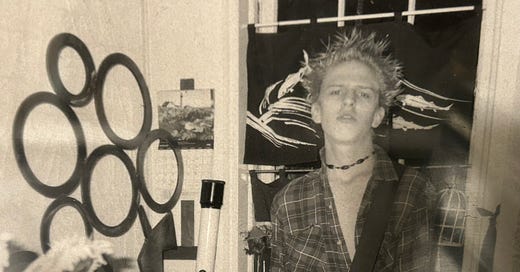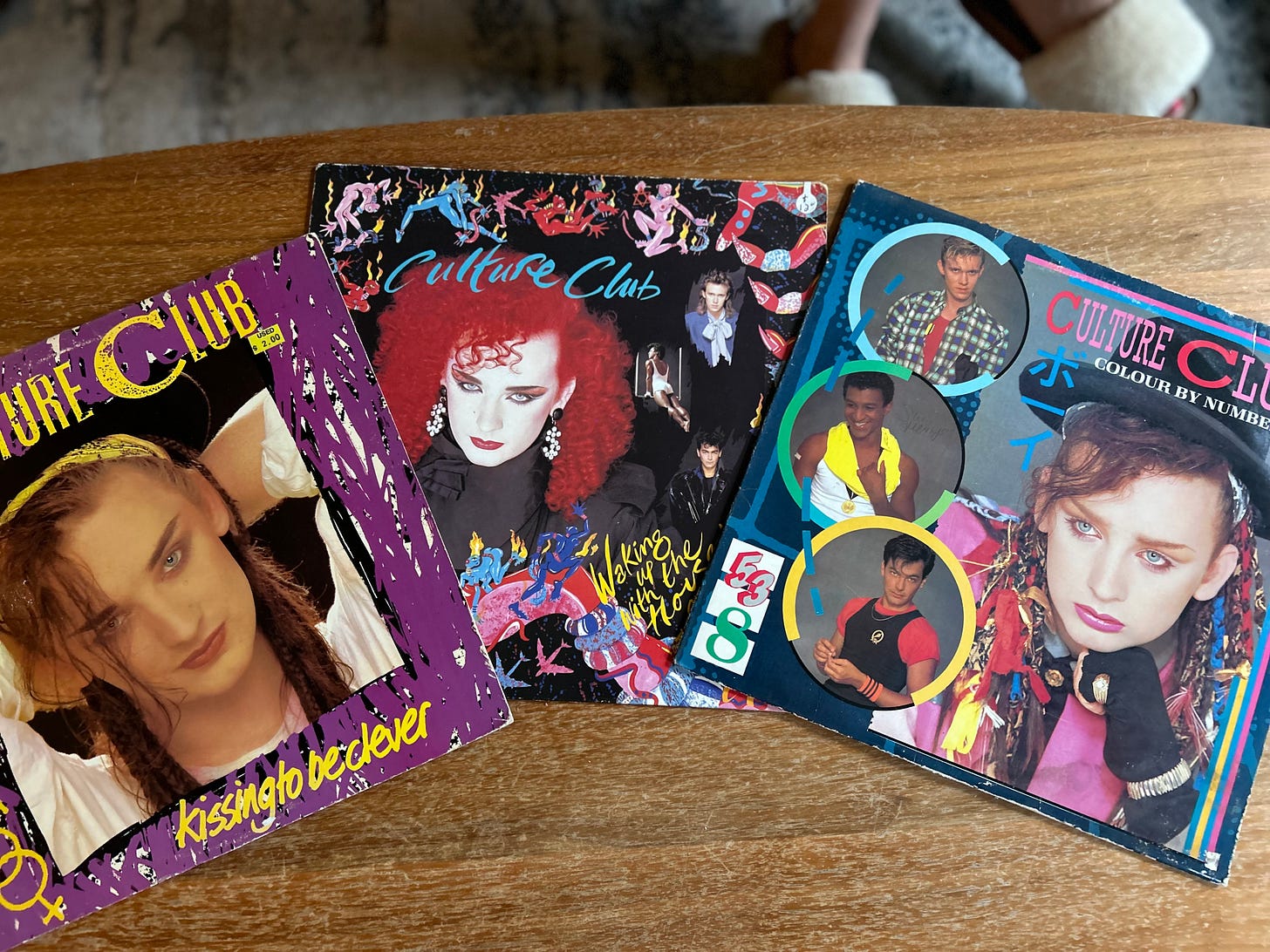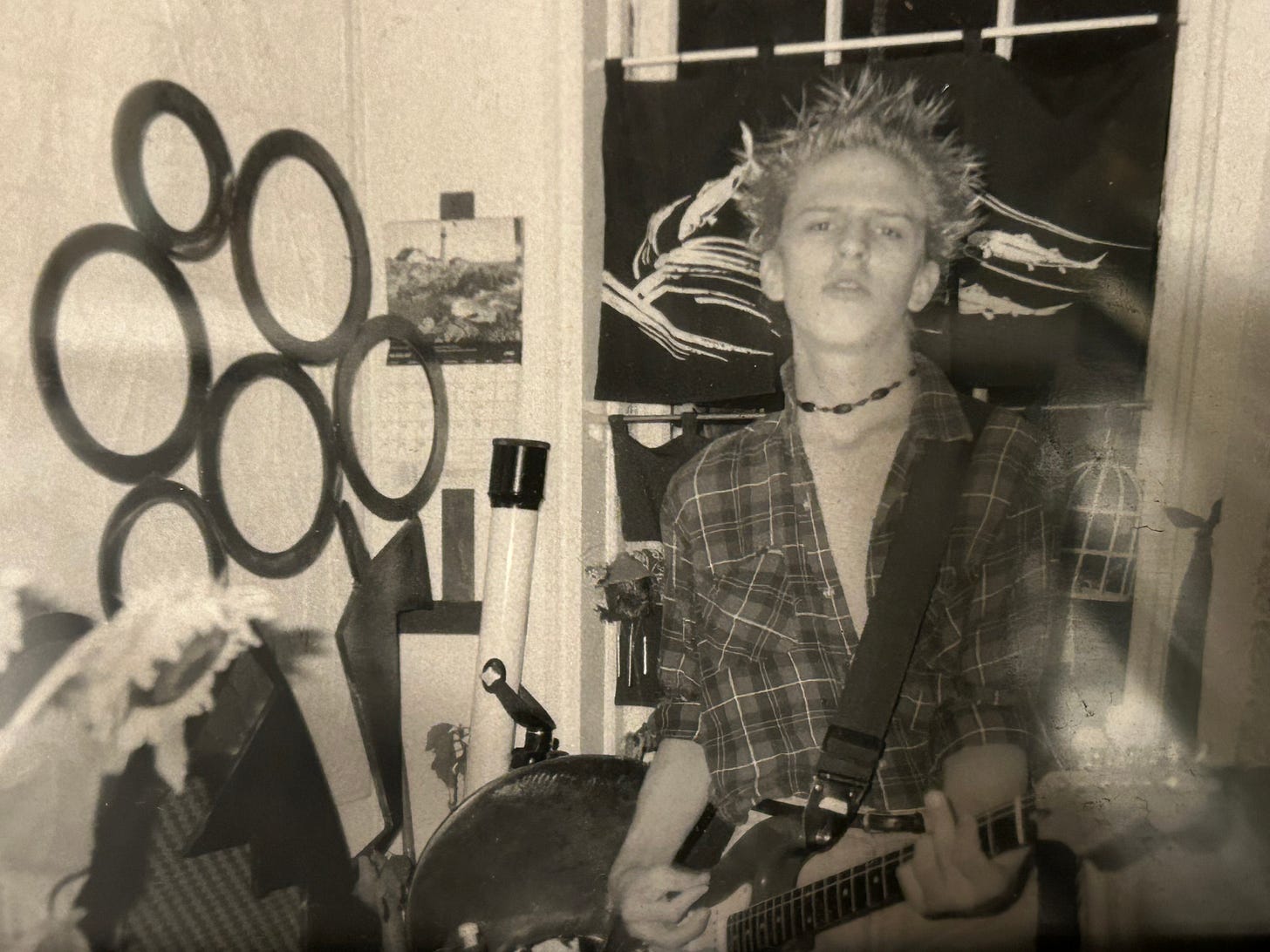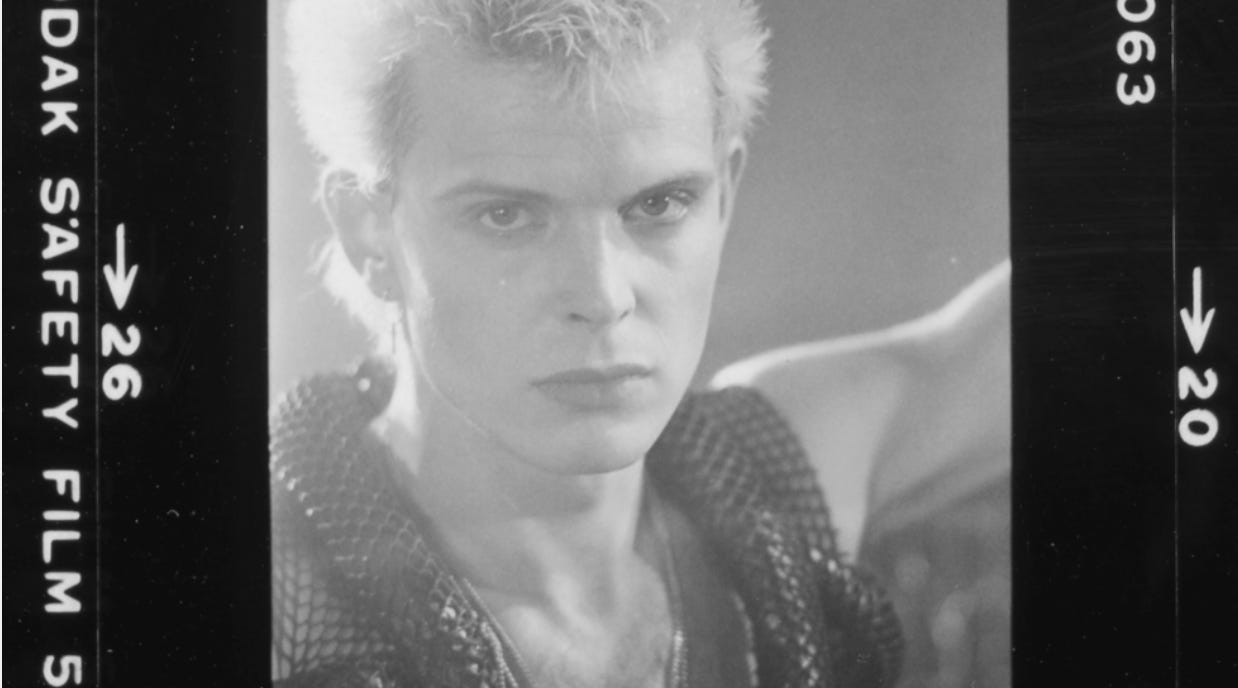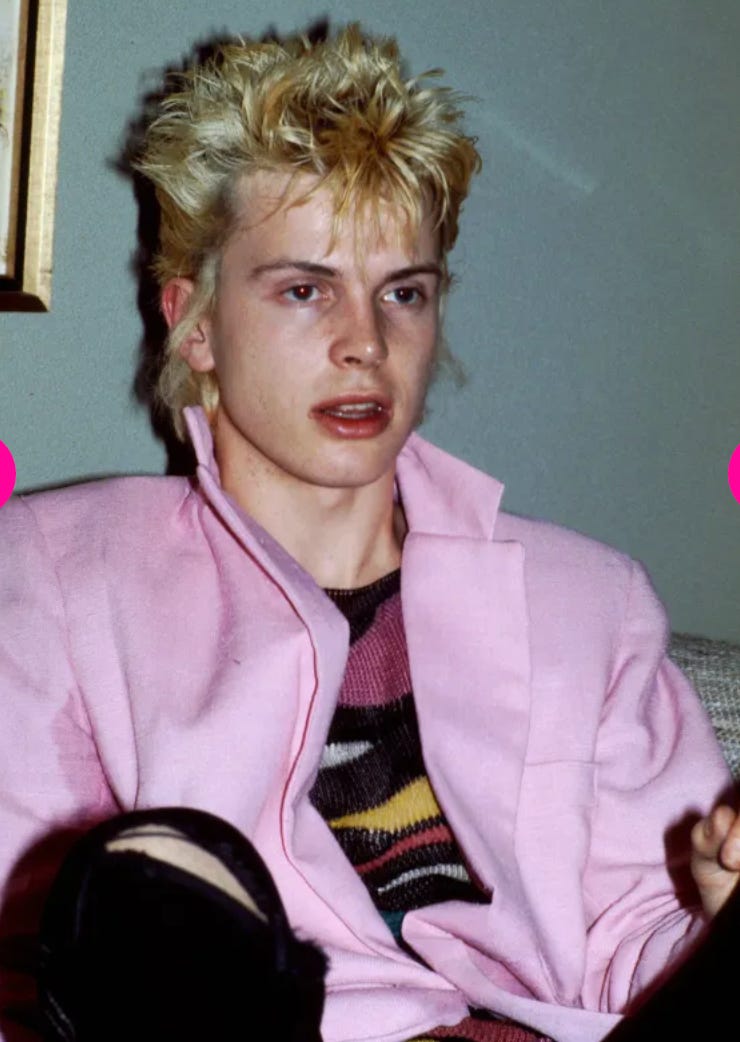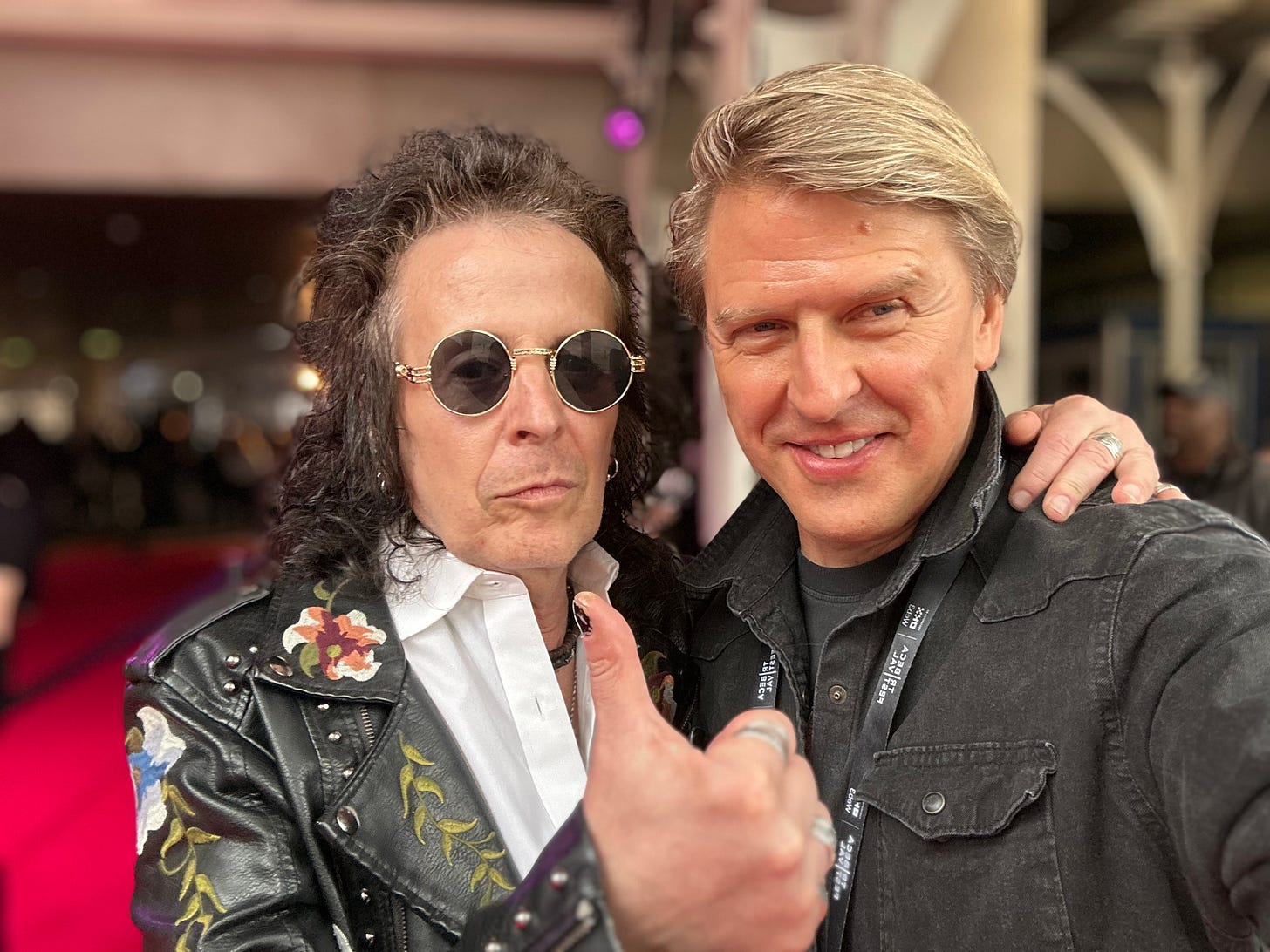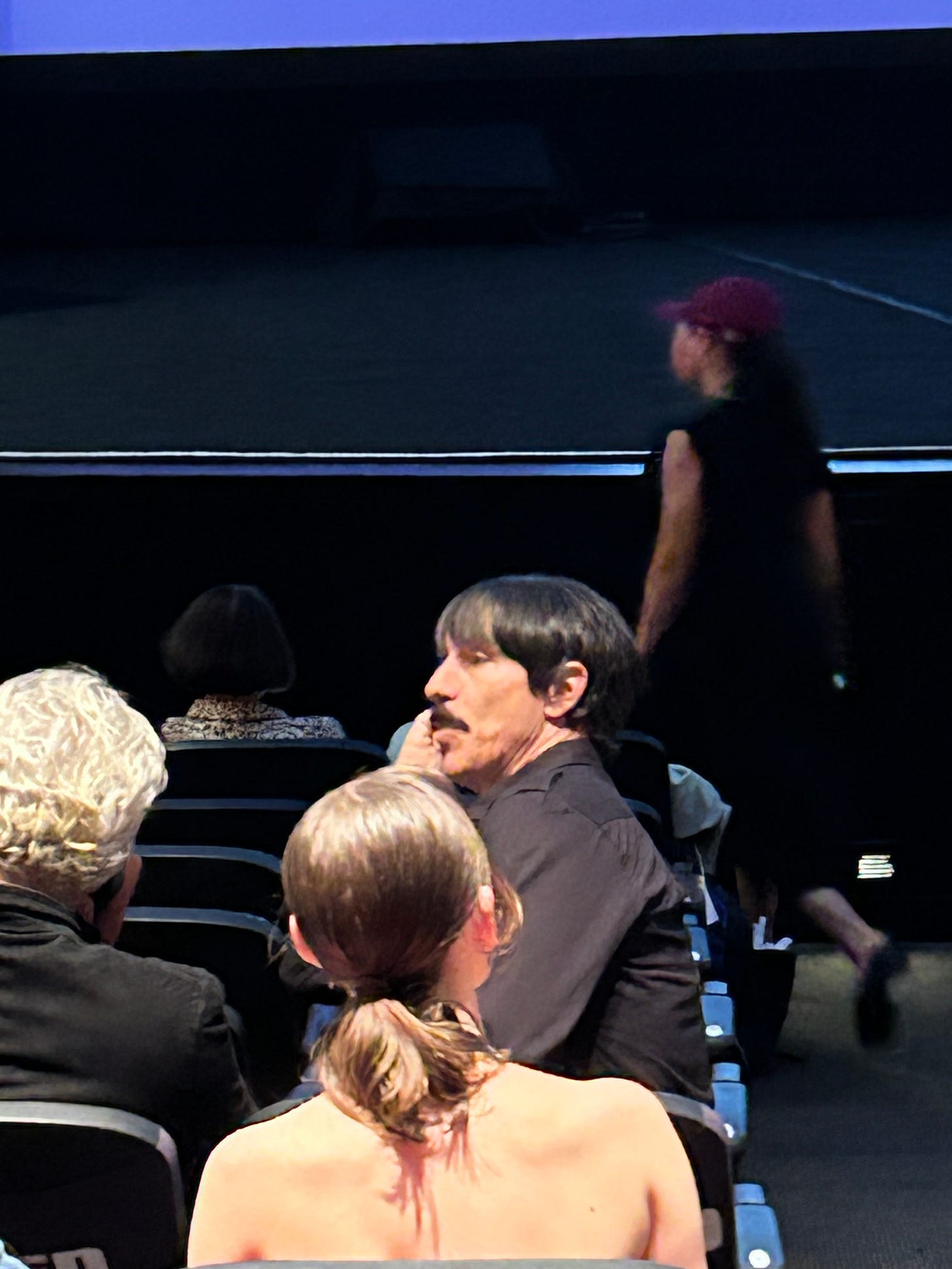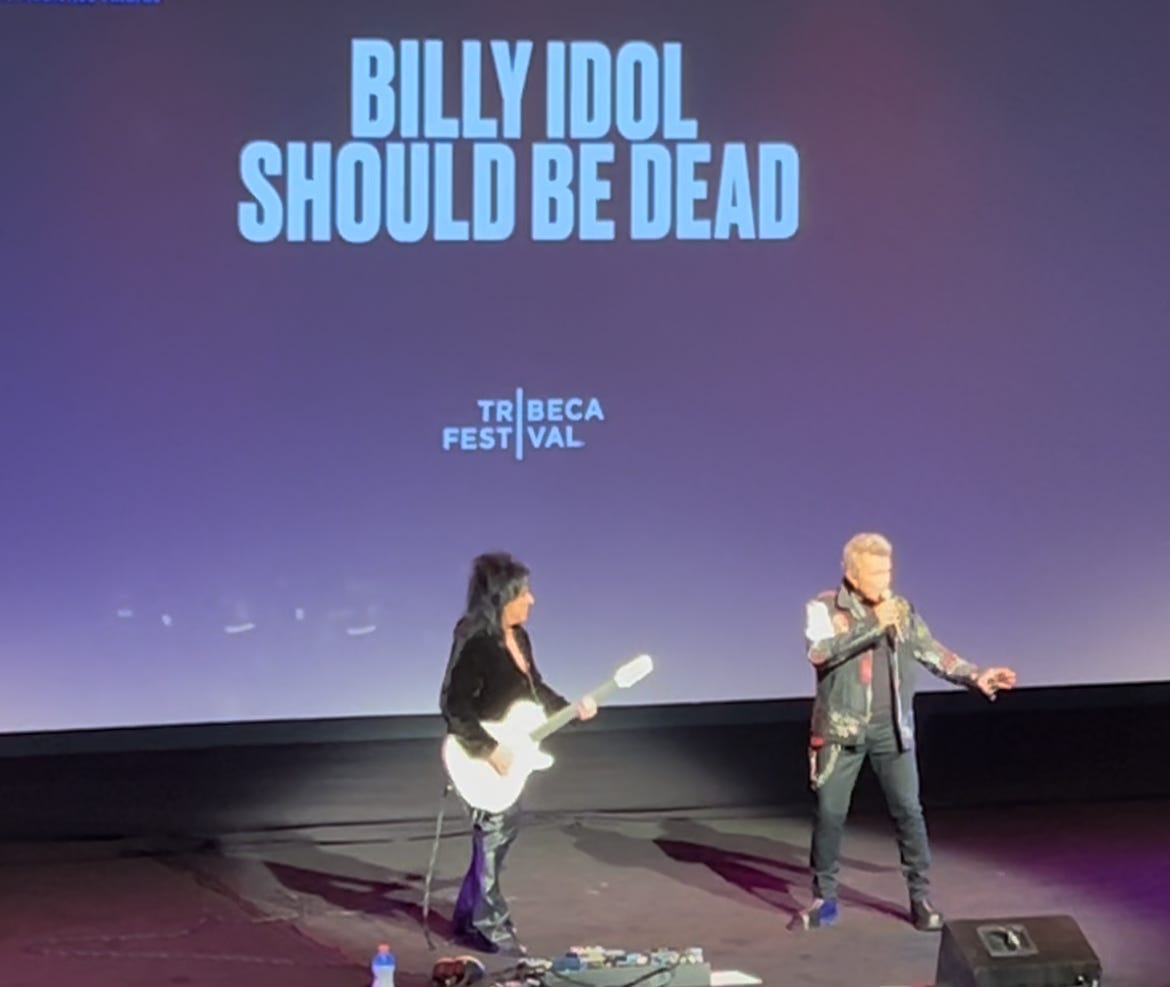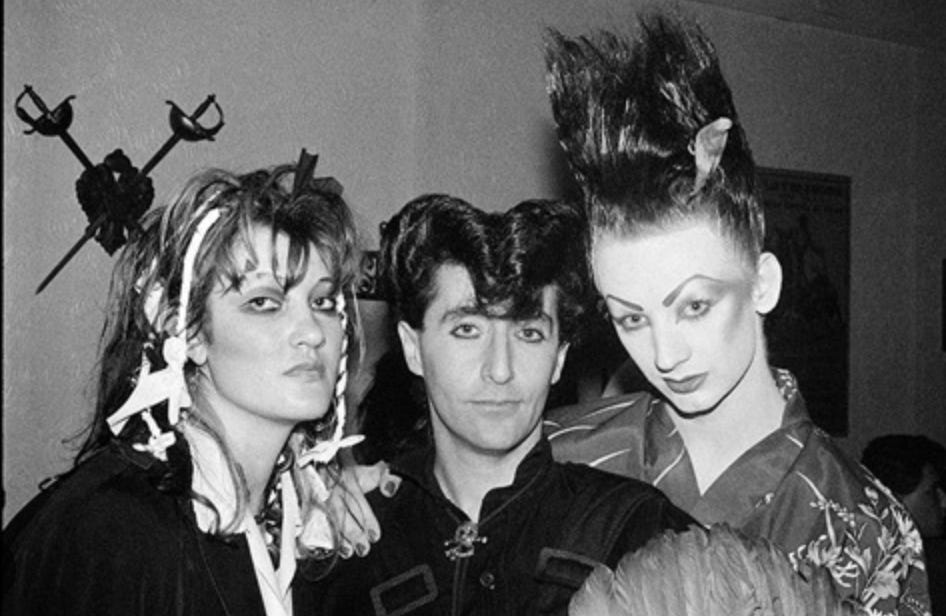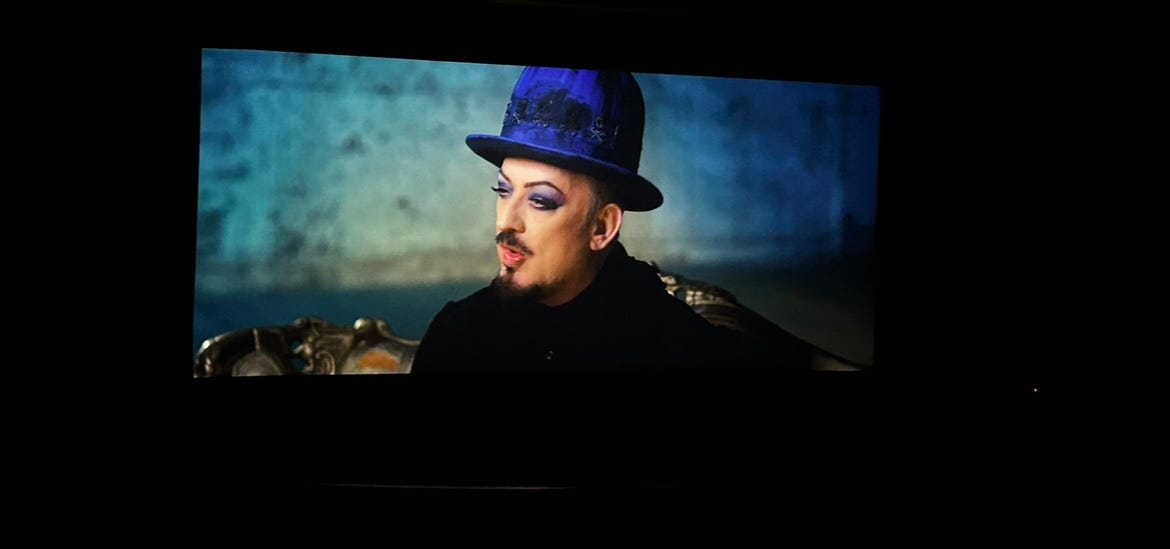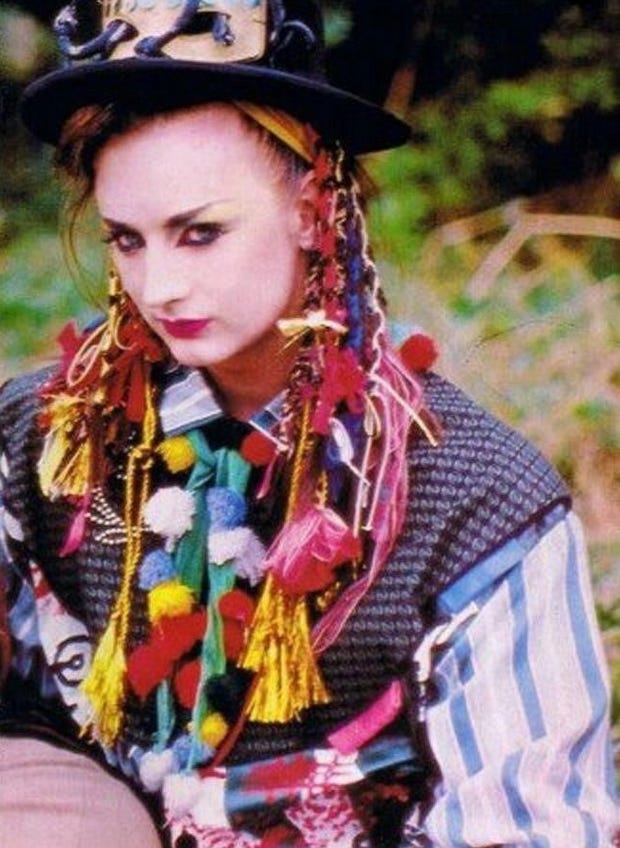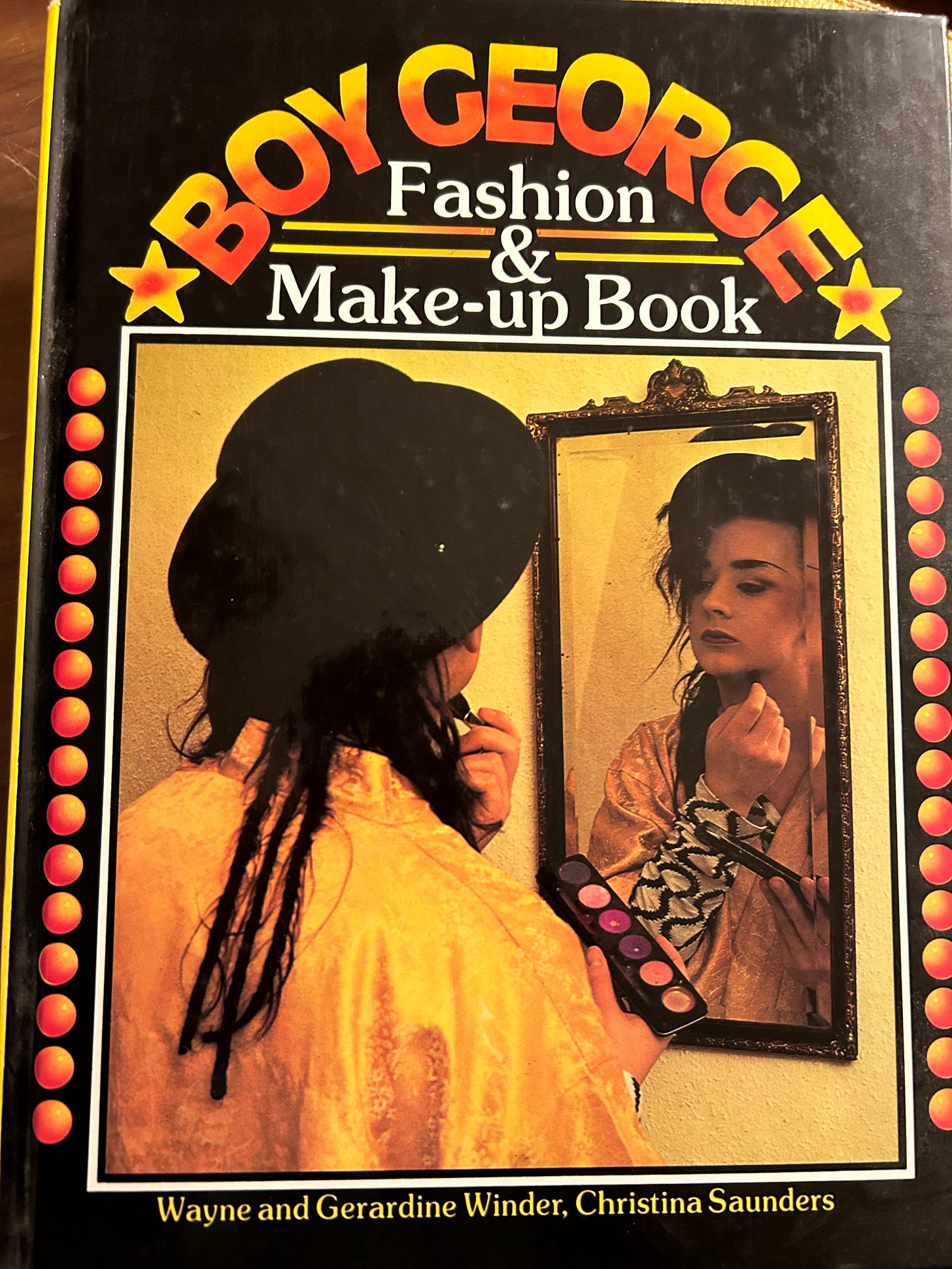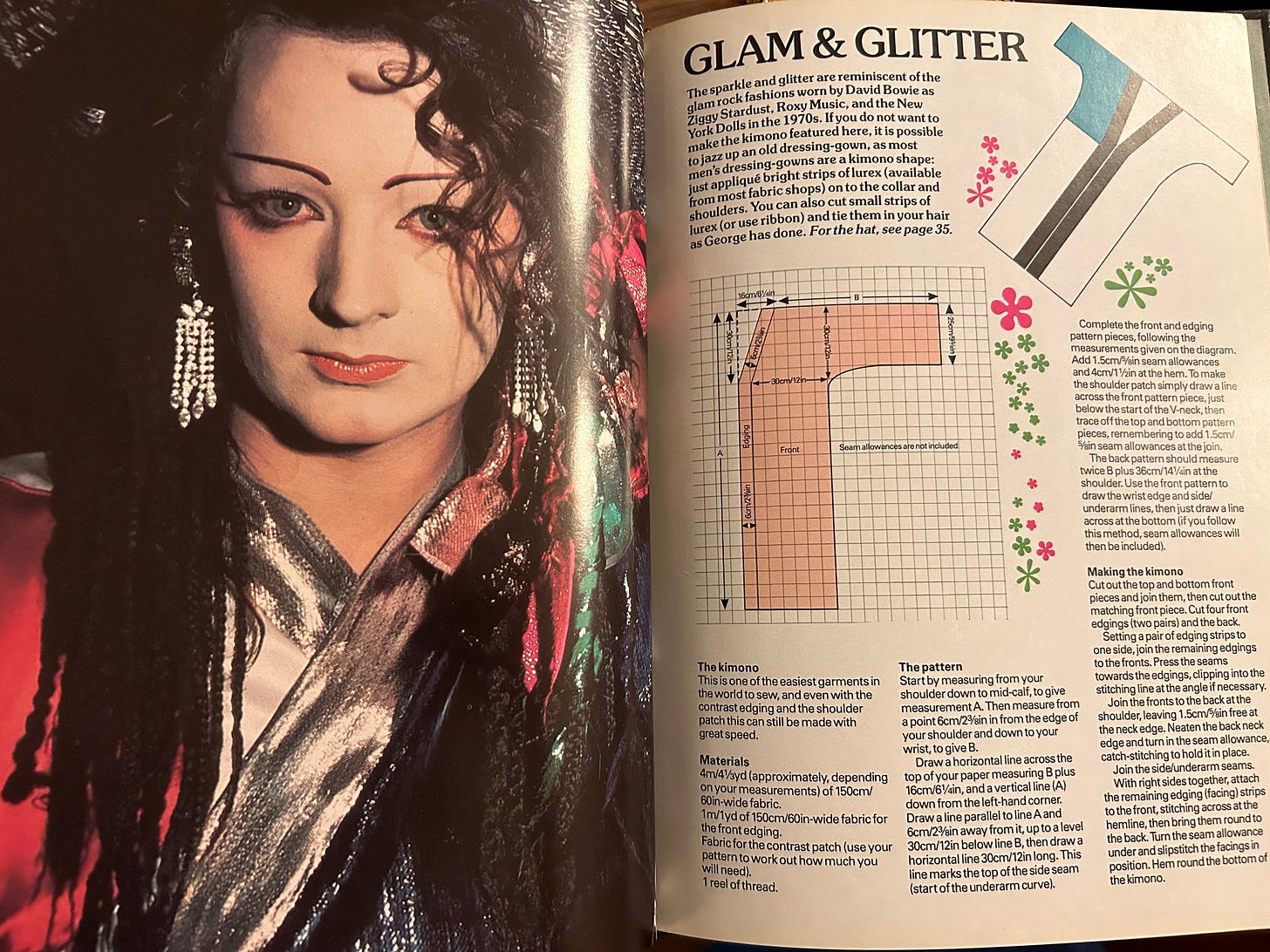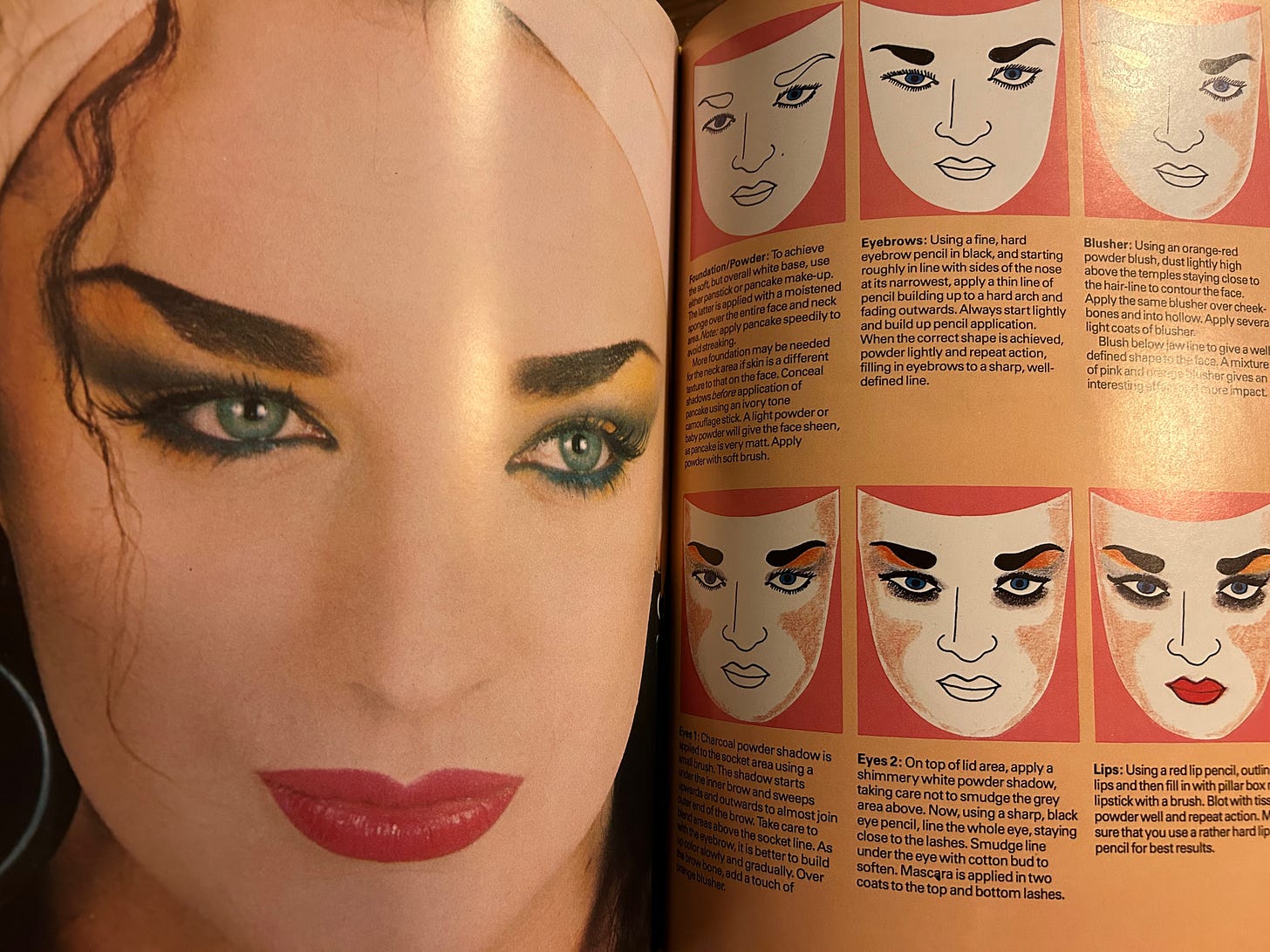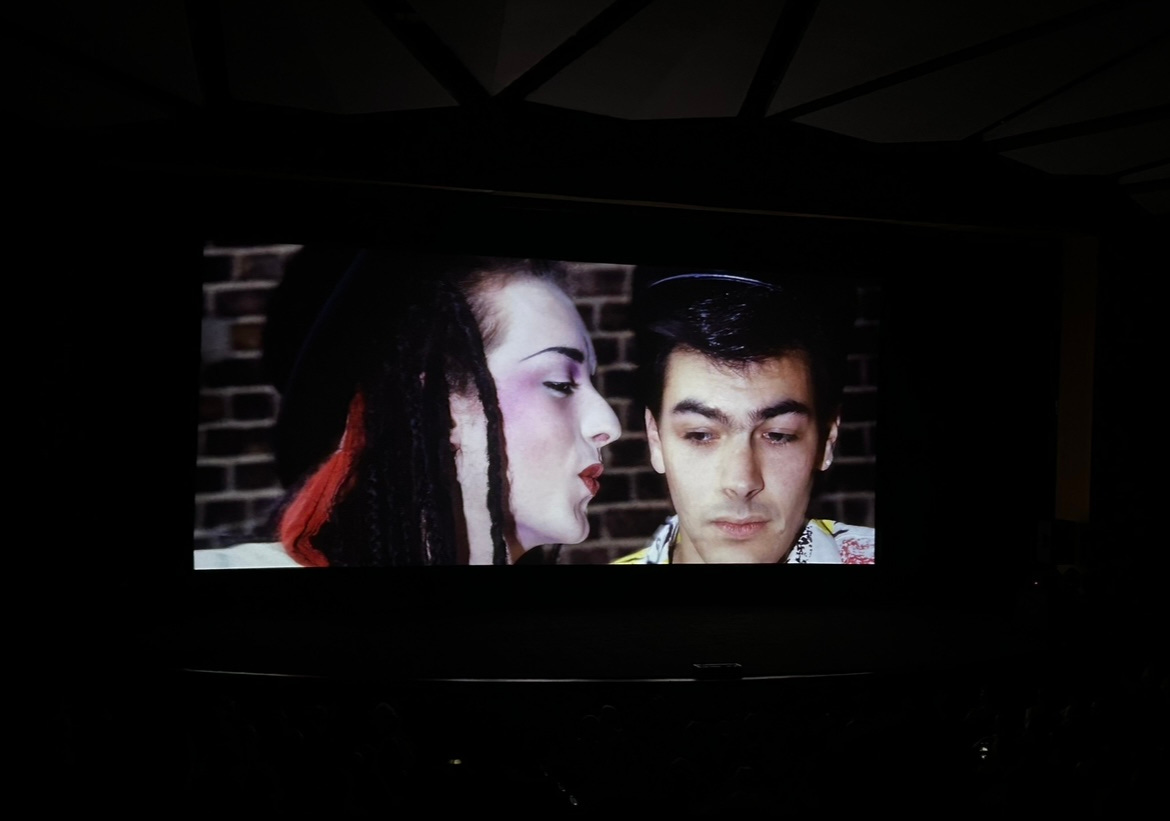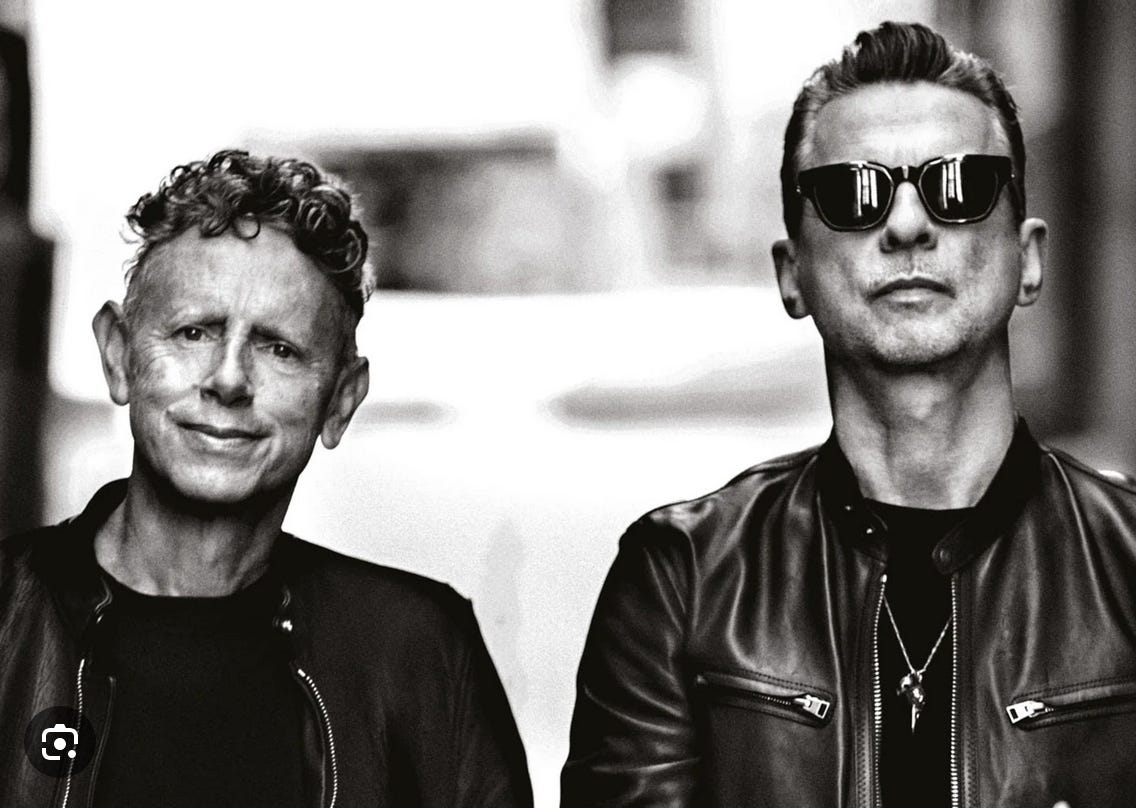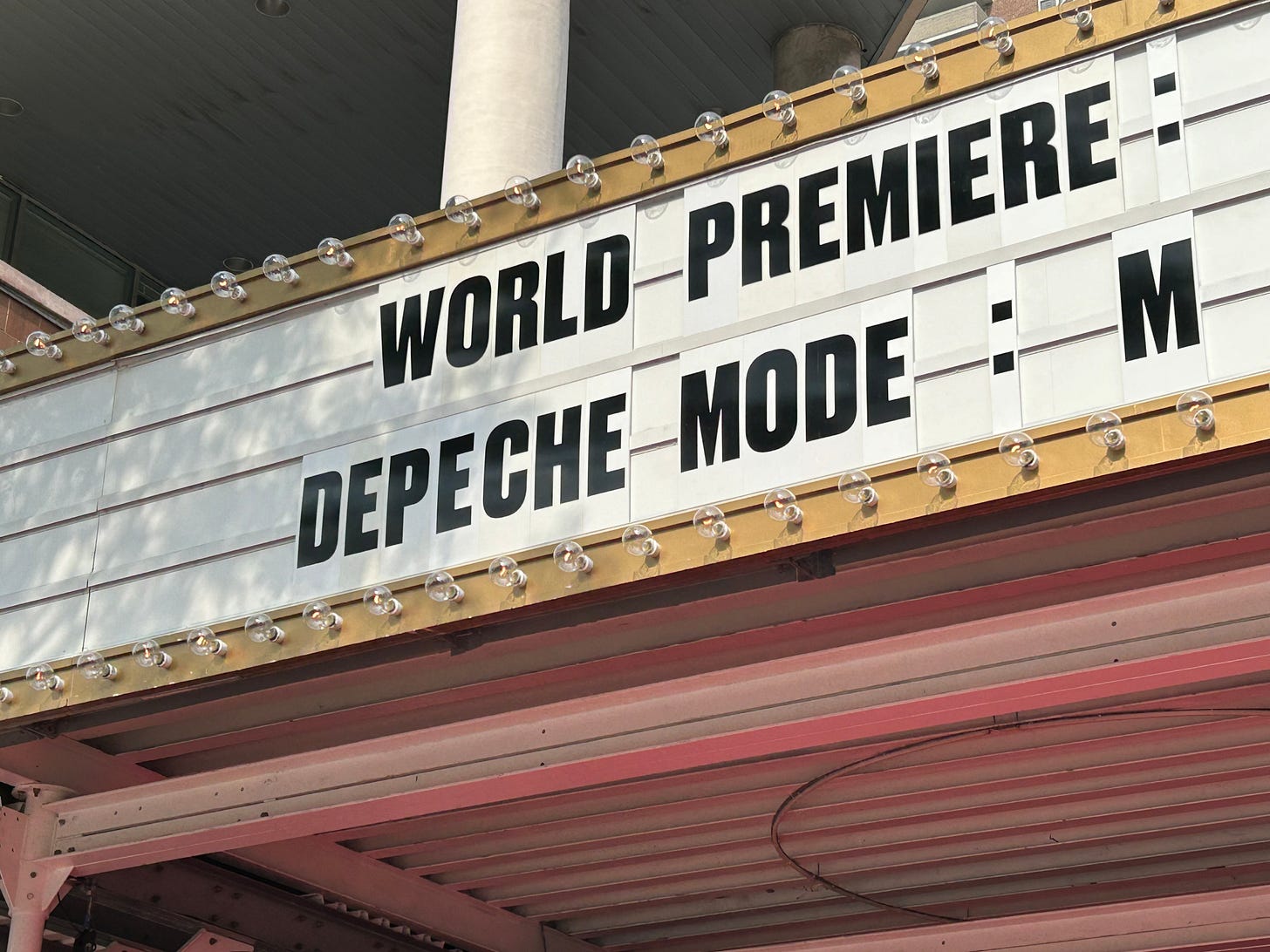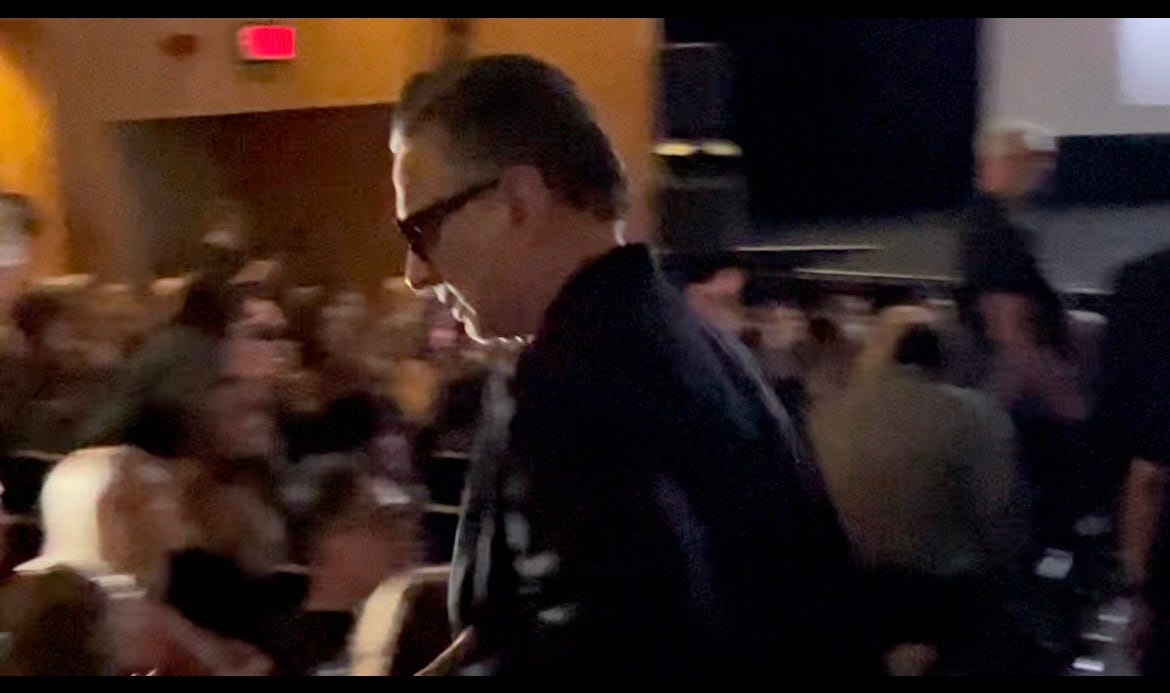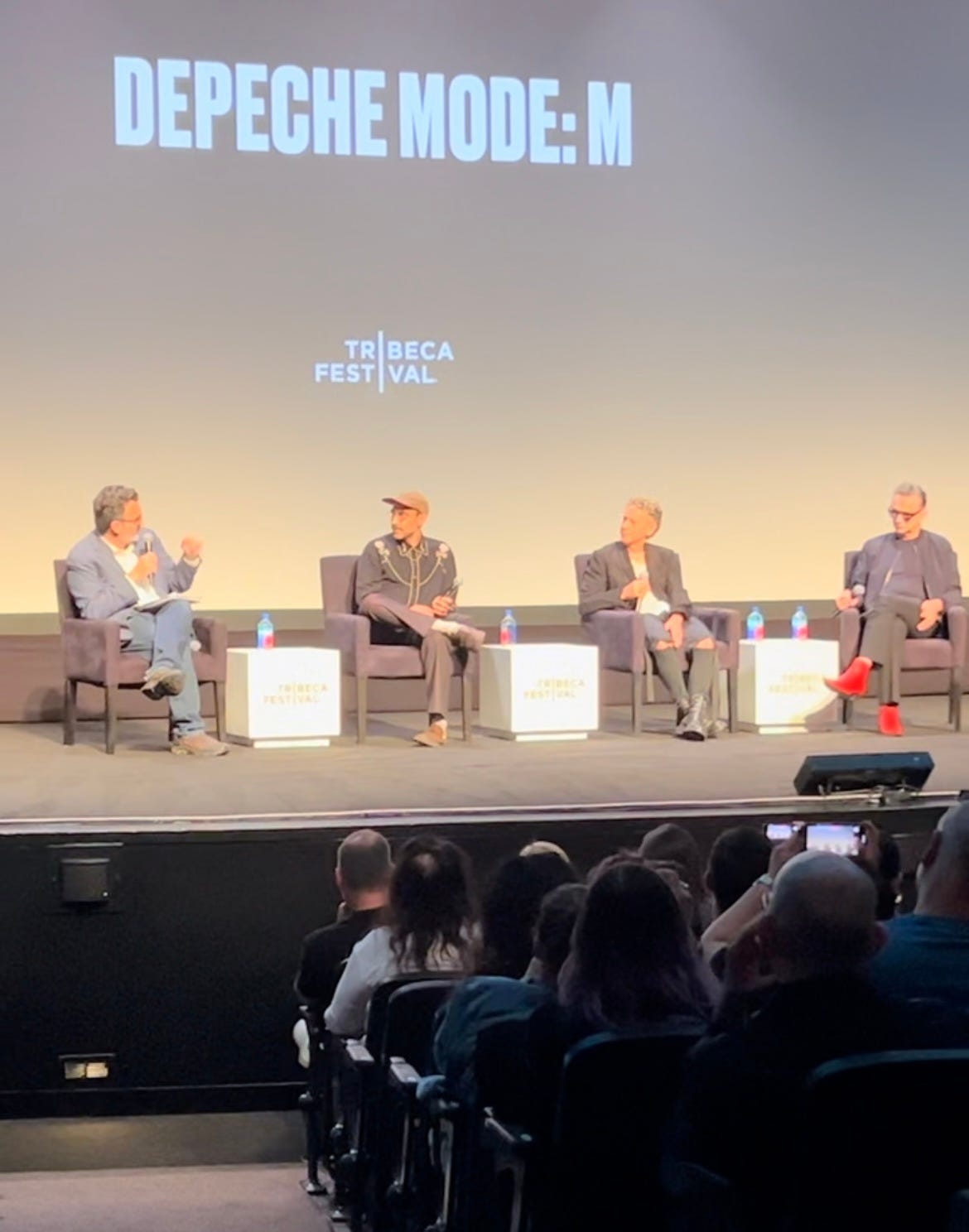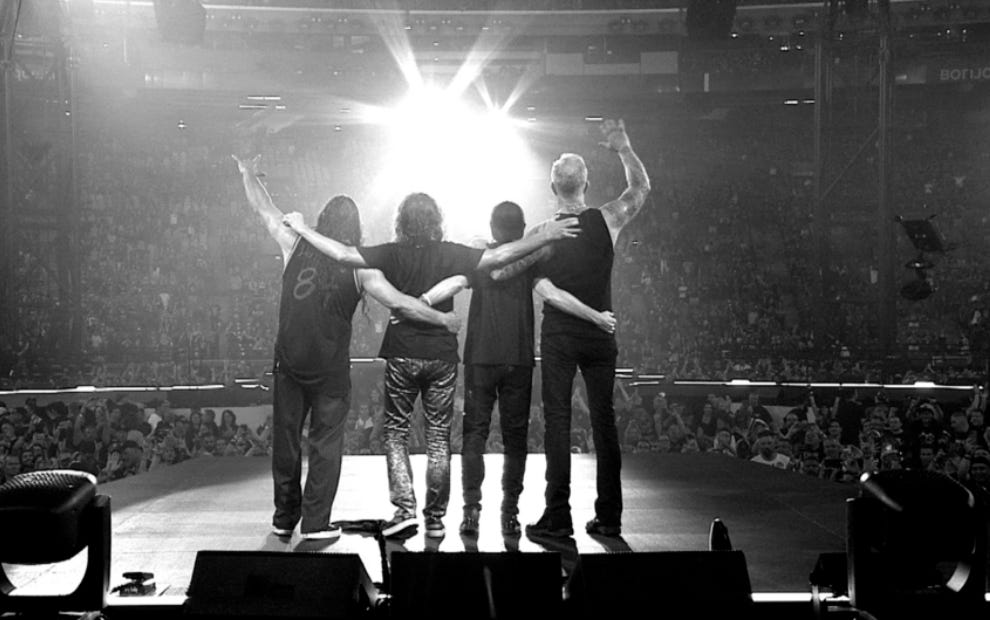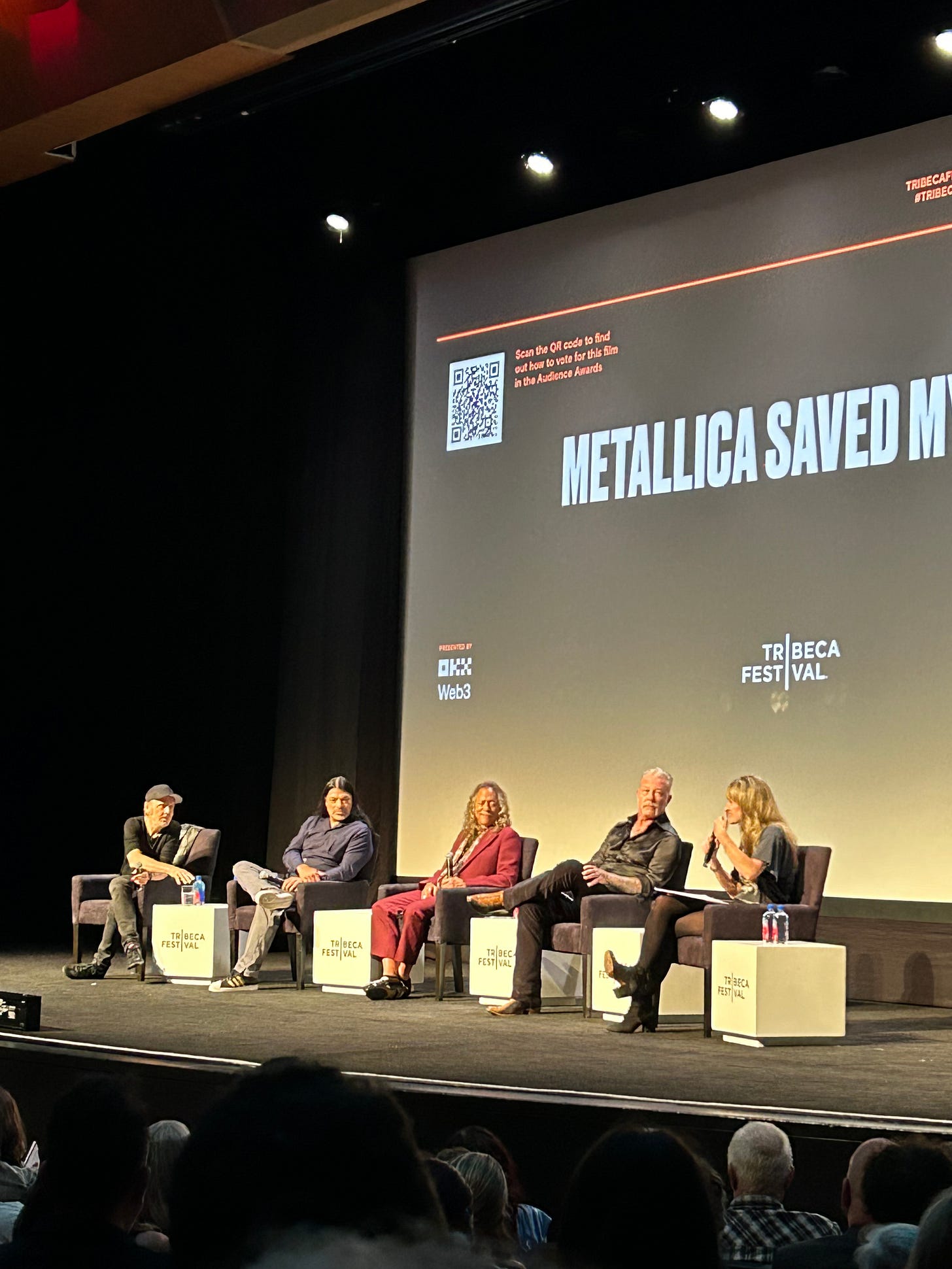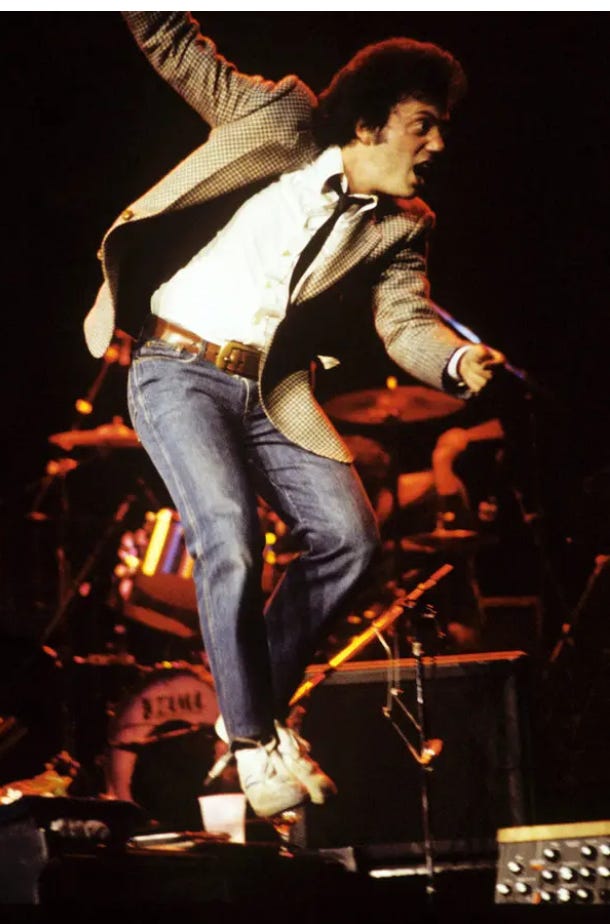So if I could go back in time to my 11 year old bedroom, there would be a Billy Idol poster with that amazing spiky blond hair, lip snarl and fist pump…
Next to a Boy George poster with that gorgeous face of make-up which seemed completely normal to me in our house with my artist mom, LeAnn, who loved Kabuki and all things Japanese.
Let’s move ahead a few years to teenage me, and you’d find a Depeche Mode cassette tape next to Metallica’s And Justice for All on top of my torn flannel shirt which I tied around my waist with my combat boots and ripped jean ensemble.
And flash forward to present day me who is finally appreciating the work of Billy Joel and collecting The Stranger on vinyl. Well, this past week at this year’s amazing edition of the Tribeca Film Festival, 3 phases of my musical taste were entirely represented with appearances by many of these performs in the flesh and blood! Or should I say ‘Flesh For Fantasy’ (little Billy Idol reference there).
Let’s start with my personal style idol - Billy Idol - and his documentary that premiered on Tuesday, Billy Idol Should Be Dead directed by music video master, Jonas Åkerlund (Grammy winner for Madonna’s Ray of Light video among 100s of other iconic videos).
This film is endlessly entertaining as Billy is hell bent on achieving his goal of entertaining everyone he comes into contact with as a sneering punk rocker, an MTV sensation, a Harley driving substance-abusing LA bad-boy rocker, or a dotting grandpa. The archival footage of him in his English punk prime is exhilarating.
And I have to say, Billy created that look, and was born! The film shows a long-haired John Lennon wanna’ be with round glasses that would have been forgotten in the annals of high school talent shows. But once William Broad became Billy Idol - he choose IDOL as a variation of Idle as in “William was idle in school” a bad comment on his report card - the world got its first mainstream dose of PUNK ROCK ‘tude. Not since Elvis had a seismic quake in rock style been felt. The film does an amazing job of charting his rise, and MTV’s critical help in that with their heavy rotation of Billy’s amazing videos - please watch White Wedding now (apparently all artistic decisions were in a matter of hours based on fever dreams of Billy). Billy, along with guitar maestro Steven Stevens and new formerly disco produced Keith Forsey, invented a sound previously unheard of - a thumping dance beat, guitars that felt more metal than punk, and a mix of Jim Morrison, Elvis, and Peter Murphy on vocals. Of course, Billy is the ultimate PUNK Odysseus who can’t be killed by overdose, broken glass, or spurned women wearing no clothes! It is almost an ad for take what drugs you may and drink whatever the hell you want - until a terrible motorcycle accident happens that almost costs Billy his leg. High points in the film are his unorthodox relationship with Hot Gossip dancer, Perri Lister -they weathered years of ups and downs (look at that couple, man).
And his infectious joy while performing that, to me, seems to be his redemption. The film’s finale shows Billy still performing and giving it his all, but as a loving grandpa. Not to mention that two of his children showed up much later in his life - birthed from love affairs on the road - and Billy works hard to make a later-day family of them all. Ah, Billy. Who wouldn’t fall in love with that guy!
Pros - I ran into Phil Feit, legendary bassist on the track White Wedding, out front.
Anthony Kiedis was in the audience (almost got to say hi!)
And Billy and Steve took to the stage to perform and sounded great.
Cons - didn’t love the animation they used to bring to life some of Billy’s insane drug-use stories, but it grew on me.
Next up, was Boy George & Culture Club directed by Alison Ellwood (who made The Go-Go’s doc which I adored) filled with ‘to die for’ archival footage of Culture Clubs’ early performances and Polaroids of a young George O’Dowd that must be published into a book as he takes a plastic garbage can, cuts it in half, and transforms himself into Nefertiti by wrapping cloth around the transformed trash can and placing it on his head, grinning.
The film charts the band’s haphazard rise in such key events like bassist Mikey Craig approaching Boy George in a disco with the proposition to form a band. “Why not?” With the addition of guitarist Roy Hay and former dream-boat punk drummer, John Moss, Sex Gang Children was complete. Yes, that’s right, this was an early name before they focused on ‘Culture, a worldy inclusive vibe ….and Club, where all good things happen. Boy George appears in a sit-down interview - amazing hat on his head
- opening up about his deep love for drummer, Jon Moss. This love being his prime motivation for joining the band and his heart-break being the subject of most of their early hits. The film does a wonderful job of charting their on-again, off-again love affair and the band’s meteoric rise after their last minute addition to Top of The Pops, or I should say Boy George’s rise. With news media only ever wanting to talk to Boy George, the inter-band relations started to fray, in combination with George and Jon Moss’ affair. Their is no way around the fact that Boy George was a face we certainly HAD NOT seen before.
Boy George talked about the intense hatred they faced early on from angry crowds not wanting to see a Boy Dressed as a Beautiful Girl. I had no idea of the complex gender implications that Boy George represented as I stared at this book that my mom bought in the 80’s that shows you how to dress like Boy George and how to replicate his make-up.
How great is this book? The film is a celebration of all Boy George & Culture Club accomplished in the brief but mighty run, in spite of the band drama. Boy George and Jon Moss both give interviews about the very real love they felt for each other. It’s hard to know exactly what went wrong,
But heroin derailed not only Boy George in a public career damaging melt-down. In classic Culture Club fashion, Jon Moss is currently suing the rest of the band (over what we don’t know). But that aside, they still tour, and the film is a testament to just how good they were, melding styles and sounds that are still so unique and unforgettable, even though the Number One hit ‘Karma Chameleon’ is a grating blessing the band is still perplexed by. As grumpy as Boy George is at times in his interview, there is no discounting as Roy Hay said in the Q&A (along with Mikey Craig), ‘Boy George was the most talented and creative person I have ever encountered, and I’ve worked with some greats at this point.” Let’s keep it real, Boy George’s voice is like no other. Period.
Depeche Mode. Two words - all black. OK, one more word - synthesizer. Hell, two more - AMAZING LIVE!
Depeche Mode: M is a thrilling concert film directed by visionary Mexican director Fernando Friás chronicling three sold-out nights in Mexico City during the Dia de los Muertos celebrations. The international audience at the Tribeca Film Festival was on its feet, clapping, singing along, and spontaneously standing up to pay homage to lead-singer, Dave Gahan and guitarist/keyboardist/songwriter, Martin Gore, in attendance.
This unique concert film departs from the norm as director Friás uses the Mexican cultural association with death and the after-life - think skulls and Day of the Dead masks - with Depeche Mode’s latest record Momento Mori (translation ‘remember you must die’). It is a fascinating and experimental film that was exhilarating to be apart of in the audience. Friás uses narration of Mexican poetry by actor Daniel Giménez Cacho throughout giving the whole film a solemnity that fits perfectly with tracks like Personal Jesus. I must confess, I had NO IDEA Depeche Mode was so huge around the world - much more like U2 than a synth alternative band (emo now). And that they sound better NOW than they did in the 1980’s! It made me want to see them so badly live, but I realized, I already have. Favorite moment in the Q&A - when asked about his increasingly extravagant front-man act, Gahan responded that “Life and death are so close, it’s so fleeting, but when you are preforming on stage, it’s a moment, you’re really in the moment, and at the end of the day, that’s all we really have, isn’t it? “ Nice summation of Memento Mori, Dave, and amazing red boots.
Now this next film might seem like a stretch style-wise, and you might think of mullets and moustaches (which are actually pretty popular all of a sudden think Benson Boone) when I say this next band, Metallica. BUT the documentary Metallica Saved My Life - again by director Jonas Åkerlund - is a powerful and emotional portrait of Metallica’s fan culture and the band’s connection to what front-man James Hetfield calls the 5th band member - THE FANS.
Growing up a Metallica fan, I felt like it was a password once uttered, doors to friendship opened even if it meant sitting in a school yard blasting Master of the Puppets til the sun came up. No judgements. All are welcome. All can head-bang no matter race, creed, color or politics as James mentions in the film. To paraphrase, ‘we don’t care what side of the aisle you vote, or what you did in your past, we are all here to rock tonight.’ It’s a powerful statement of unity and acceptance in the most unlikely of places - heavy metal. The film follows a group of normal
fans - some of whom have purchased a newly made touring pass - the black pass - allowing fans to follow the band on tour, as well as famous fans like Jason Momoa & Tony Hawk. There is one thing in common - Metallica is awesome to their fans. From tragic stories of a lost child that loved Metallica precociously beyond her pre-teen years to letters from a suicidal young man - Metallica is there. There is a very holy, empathetic welcoming vibe to this film that lets us know that struggles with mental health are very real and it helps us normalize them. “We are in this together.”
The band was there live and in-person, and I could not restrain myself from screaming OBEY YOUR MASTER!
As I was leaving the OXK Theater at BMCC, I saw one of the fans from the film. An older Metallica fan - here is my style moment (he was wearing THE MOST amazing sleaveless denim jacket with Metallica emblazoned on the back and a killer ‘Ride The Lightning’ tee) walked over to him, and asked him to sign a poster of the film. The kid shrugged and said, “Hell yeah”. His mom and dad started laughing and filming the event.
In Metallica’s world view, the fans are the stars. “Thank you, friends.”
Last but not least - Billy Joel: And So It Goes. The Piano Man, himself. HBO Documentaries along with Tom Hanks’ Playtone has taken on Billy Joel in this two-part epic directed artfully by Susan Lacy & Jessica Levin that appoach Mr. Joel in a light I never even knew existed - the Al Pacino Billy Joel!
Directors Lacy & Levin start with Joel in the house on the hill, mid-renovation, he always dreamed of buying when he was a broke ships’ mate staring from the Long Island sound. They then rewind to a completely broke, scruffy Joel in the recesses of the early 1970s. Someone so filled with emotion, so skilled at the piano, yet so shut-off from the world.
I mean, I don’t even know what you call this style - but it’s cool. Joel found his way into one of his first bands - on Long Island of course - The Hassles - because of his skill on the keyboards. Eventually, he fell in love with band member and friend Jon Smalls’ then wife, Elizabeth Weber, just as Joel and Smalls were releasing an album of heavy metal organ music for their splinter group, Attila (yes, Joel played heavy metal organ rock).
All hell broke lose, and Joel and Smalls parted ways, with Joel attempting suicide. Once rescued by Smalls?! But Joel was deeply in love with Elizabeth and on his own for years, wrote much of his early soul-stirring music about Elizabeth. In a bizarre twist of fate, they found each other and were the perfect match - Joel filled with songs, Weber his anointed manager - to storm the music biz. And it took YEARS. The film devotes just as much time to Joel as Weber, she was beautiful and had amazing style (these lyrics were written about her “They were all impressed with your Halston dress, And the people that you knew at Elaine's” along with “She’s Always a Woman”, “Just The Way You Are”, “She’s Got A Way”.)
I had no idea that Joel had so many near misses - albums recorded at a speed too high making him sound like a chipmonk to record producers wanting to make him into Elton John that it seemed there was no way for him to succeed. Each time, Joel went on his way, alone, getting more and more frustrated and depressed. Taking an odd job to make money in an LA bar as a Piano Man lead to you know what - the classic anthem of the NY METS, Piano Man. Weber is actually the waitress character in that song as they both worked there, Joel under an alias as he had released a record or two by that time.
Well, you know the rest, by 1977 The Stranger took over the airwaves and Billy Joel became the hardest working man in show biz.
Success brings money, fame, touring the world, drugs, and divorce. The film doesn’t shy away from the reality, but one thing is for certain in the film, Billy Joel is a talent that could not be restrained.
I’m looking forward to watching Part 2 on HBO coming soon. Here comes Christie Brinkley!
So…we took a musical tour through my song catalogue this past week at the 2025 Tribeca Film Festival, and I can’t tell you much I enjoyed these films. Gosh, what era-spanning rock docs inspired by my record collection will be there next year - Thin Lizzy, De La Soul, The Cars, The Smiths, Dinosaur Jr. & Paul Simon?! Thanks Tribeca Film Festival.


